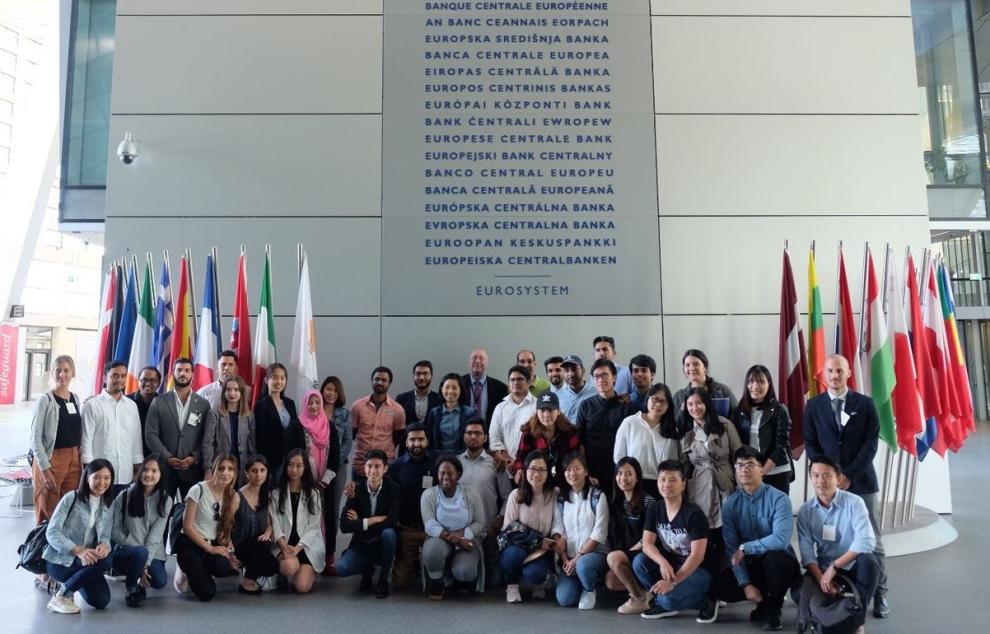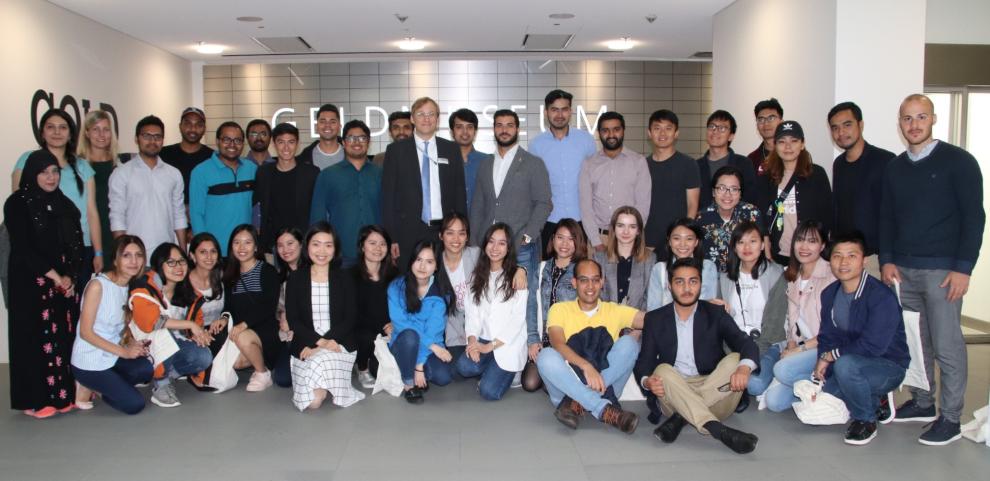Master´s students at Rhine-Waal University go on an excursion to the European Central Bank and German Central Bank in Frankfurt
39 students in the Finance and Economics Master´s program at Rhine-Waal University of Applied Sciences visited the European Central Bank (ECB) and German Central Bank (GCB) in Frankfurt on June 21-22, 2018. The excursion was a part of the course “Applied Research Project” and its aim was to familiarize students with the work of two of the most powerful financial institutions in Europe.
Huynh Bich Ngan Le, a teacher of the course “Applied Research Project”, Dr. Carina Goldbach, a research assistant in the Faculty of Society and Economics, and 39 Master´s students spent two days in Frankfurt to visit the European Central Bank as well as the German Central Bank and its Money Museum. Both institutions paint the financial picture of Europe significantly.
In addition to visiting the two establishments, the students attended a couple of interesting and insightful lectures. The first was given by Prof. Dr. Dieter Gerdesmeier, Secretary of the Monetary Policy Stance Division of the European Central Bank. His presentation highlighted organization of the ECB, its mission, its decision process, and technicalities of the monetary policy among the 28 countries of the European Union. Not to mention, the lecturer shed light on the supreme crisis back in 2008 and the link between interest rates, inflation, and prices. The presentation concluded with questions from students that covered the future of the EU and the Euro after the “Brexit” as well as the prospects of crypto currencies. The second lecture was given in the following day by Mr. Michael Schröder from the Economic Education department of the German Central Bank who touched on the role of the German Central Bank within the Eurosystem. He covered the history and task of the bank as well as the stabilization of inflation rates after the volatile financial conditions in the course of the latest financial and economic crisis. Mr. Michael Schröder also explained the voting process among the multiple EU countries.
By the end, participants visited the money museum of the German Central Bank where they were able to see a variety of historical coins and major valuable assets and to learn about the history and functioning of money. The study trip to Frankfurt was a learning opportunity for the students as they were acquainted with the work of the two major financial players in the world. Their reactions and attitudes were extremely positive as this trip fueled their curiosity when it comes to the European financial sector. Students were energized to discover the behind-scenes of the work of these organizations while also having a good time with their fellow classmates in the city of sky-scrapers!


